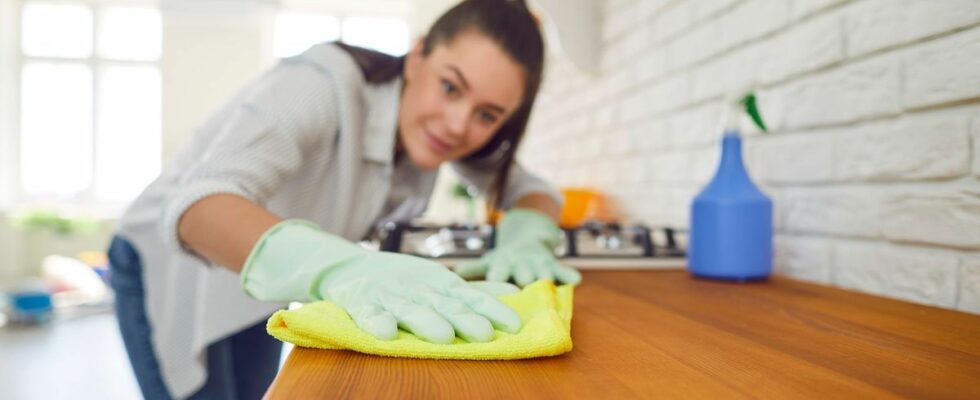Published on
Updated
Reading 2 min.
in collaboration with
Dr Gérald Kierzek (Medical Director of Doctissimo)
Beneath an apparent cleanliness, some corners of your kitchen may contain numerous bacteria that have the power to cause serious food poisoning. How to find them? Our medical director, Dr. Gérald Kierzek, enlightens us.
Day after day, some corners of our kitchen can escape our vigilance and avoid the disinfectant spray they need. Problems: in the medium term, these germ nests can cause very unpleasant poisoning. So, do you really know the elements not to forget? Dr. Gérald Kierzek, medical director of Doctissimo, has listed the 5 dirtiest places in our kitchen, which we are not always aware of.
The vegetable drawer and the meat drawer of the refrigerator
These bins are breeding grounds for germs because they are in constant contact with raw food. They can contain up to 100,000 times more germs than toilets. The most common bacteria found are E. coli, Salmonella and Listeria monocytogenes, which can cause serious food poisoning.
The mixer seal
The rubber seal of the blender is difficult to clean properly. If it is not disassembled and cleaned regularly, it accumulates a lot of bacteria. Generally, this is the case for all plastic or silicone seals in your utensils
Can openers and rubber spatulas
Like the blender gasket, these utensils are germ-retention areas. They must be carefully cleaned and disinfected.
Tea towels and napkins
Damp and rarely changed, dishcloths and towels are real breeding grounds for germs. They can contain up to 10 million bacteria per square centimeter. They must be washed frequently at a high temperature. The same goes for sponges, which must be changed regularly.
Reusable shopping bags
Beware of what follows: up to half of reusable shopping bags are contaminated with E. coli. They should be machine washed regularly.
“In summary, the dirtiest areas are those in contact with raw food, difficult to clean, humid and little changed. Regular cleaning and disinfection of these places is essential to avoid bacterial proliferation and the risk of food poisoning.” warns our doctor.
Are you starting the bacteria race? Here’s how to do it.
- Disinfect your workspace frequently. Although bacteria and germs are all around us, frequent sanitation is the best way to keep the risk of foodborne illness in your kitchen low. So clean and replace sponges and cloths regularly.
- Be careful what you touch. From a food safety perspective, be careful where you move around, and try to stay in the kitchen while you prepare your food without doing other things that could increase the number of surfaces you touch.
- Keep your cleaning tools close at hand. The goal is to avoid cross-contamination as much as possible, so keep your cleaning supplies handy and accessible at all times for quick use.
- Avoid cross contamination. When cooking, keep your workspace as clean as possible. In other words, when handling different foods and kitchen utensils, be sure to wash your hands and surfaces frequently, especially when moving from one task to another.

